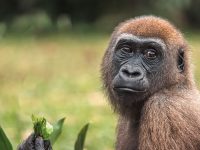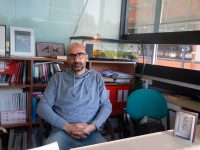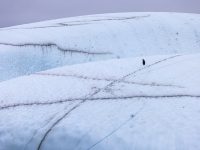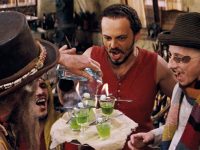Dialogues between art and nature
Aesthetic reflection as a context
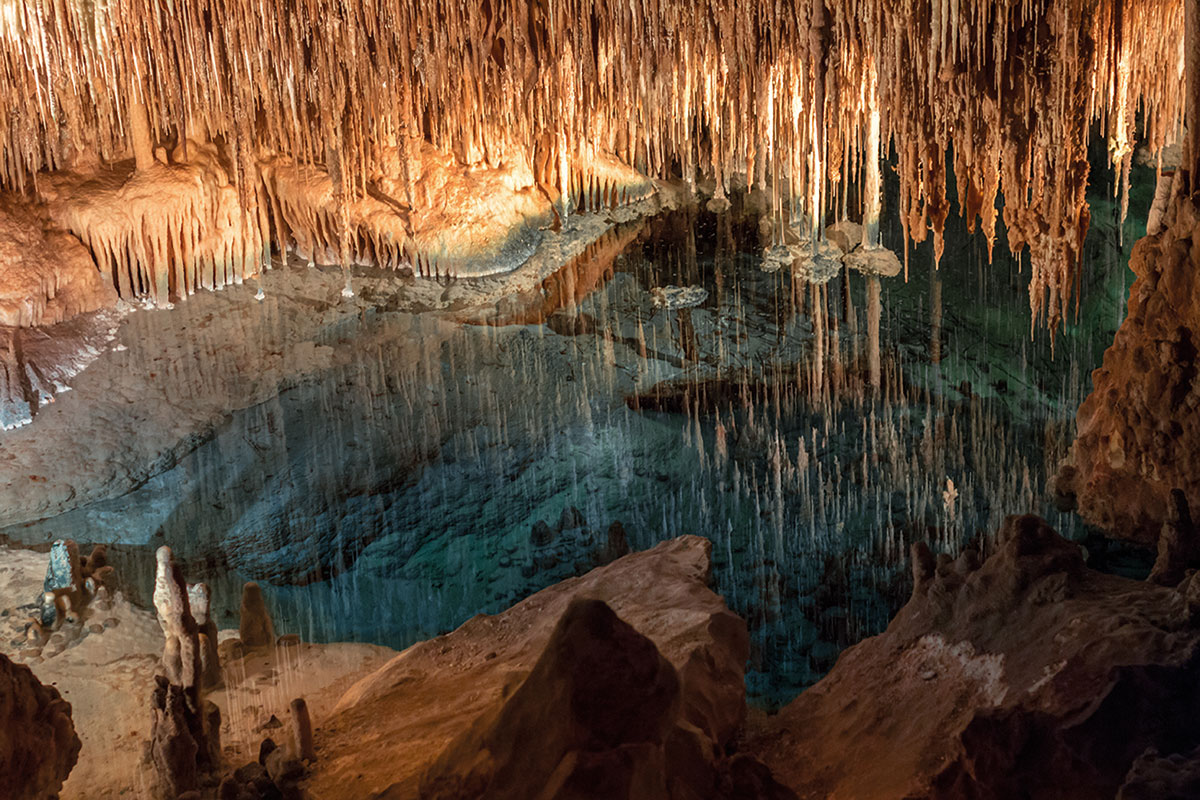
The relationship between natural and artistic aesthetics has not always been easy. Neither have the correlations between art and nature been independent from the contextualising filter that is human cultural history and its corresponding scientific developments. Approaching the subject requires studying the transition between the rights of the natural environment and its unstoppable conversion into a nature-product over time. It requires us to reflect upon a number of dichotomies: aesthetic and natural objects; representation and expression; nature as an available reality and nature as a given reality; natural environment and artificial environment. These conceptual and functional hinges may provide us with a better understanding of the different historical moments that have articulated the dialogues between art and nature.
Keywords: philosophy, art and aesthetics, experience, aesthetic object and beauty, art versus nature, organicism and mechanism.
Nature is beautiful because it looks like Art; and Art can only be called beautiful if we are conscious of it as Art while yet it looks like Nature.
—Immanuel Kant, Critique of Judgement § 45.
The correlation between art and nature is a question as old as it is persistent in time. It has been present throughout the history of aesthetic thought and also in the thousand-year development of artistic work.
While art has often been confidently attracted by the constant spectacle of active nature, it is no less true that the intelligent human gaze, deeply dependent on culture, has been able to interpret natural reality thanks to the modelling mirror of artistic parameters.
We could say that, mediated by the subject (Homo artifex), art and nature have mutually shaped their conceptual profiles, defining themselves in contrast to each other and approaching each other by vocation – and, at the same time, growing apart or rejecting each other.
This, and no other, has been an exciting and truly paradoxical game of love and heartbreak: the point of contact between natural aesthetics and artistic aesthetics.
Nature versus culture
The history of the correlation and opposition between art and nature stems from and is based on the opposition and correlation between nature and culture. Is culture itself not a kind of second nature, after all? Does culture generate nature? Or has the powerful vindication of nature itself perhaps been transformed today into a sort of second culture, a type of indispensable and resistant ecological-cultural alternative? (Albelda & Saborit, 1997).
We can easily deduce that human consciousness has ended up considering art as a paradigmatic product of its own activity – that is, as one of its most genuine manifestations. In turn, resolute nature, with its inevitable enveloping capacity, radical alterity, and enigmatic life-generating power, is described, instead, as having the characteristics of a contextual wake-up call: one that is active, systematic, shaped by organicism, and genuinely transformative (Thompson, 1989). A unique human product (art) and a generic context of what is possible (nature) have historically shaped the standard scenario in which aesthetic activities are generated (De la Calle, 1984).
«Is culture itself not a kind of second nature after all? Does culture generate nature?»
Nature is aestheticised in different ways (by art) and also aestheticises artistic actions carried out in its own environment. It jealously guards its stimulating, transformative, systematically organic «natural» character, and also manages, at times, to communicate it to art itself. We should ask, then, to what extent should we affirm, today, that these roles (art as a genuine human product and nature as the context that establishes what is possible) have really been interchanged? (Castro, 2020).
Likewise, the artistic sphere has been transformed into the usual and exclusive context of our consumerist existence, an immediate result of the society of the spectacle. Undoubtedly, a new spectator waits/suspects, perplexed, behind the door, while the pre-eminence of artifices that are aggressive towards nature advance in full force, unconcerned with ecological risks.
Considering, then, this profound (inter)change of roles, we should recognise that the relationship between art (which is constantly expanded) and nature (increasingly restricted, distorted, and metamorphosed), can no longer be considered in the traditional sense; not even if we consider it a profoundly utopian and stimulating virtual subject; not even if we tried to advocate, once again, a systematic reconsideration of the indisputable rights of the natural context, which has already, perhaps inevitably, been transformed into a nature-product.
The aesthetic object
Reflecting upon the aesthetic object involves a process that, generally, ends up favouring art. Artistic work demands aesthetic perception, which can, after all, turn it into an aesthetic object, enabling it to elicit a number of feelings through a particular form.
We must understand that, through artwork (turned into an aesthetic object), human perceivers are making signs for themselves. It is not reality itself that activates signs directed at people. Perhaps here lies the interest of making a series of reflections on the aesthetic object. Our inevitable guideline and starting point must no longer be the work of art, but rather, natural objects. The point is to articulate the indisputable rights of natural aesthetics:
In this sense, what fundamental affinities should be postulated between the subject and object; that is, between the subject and nature?
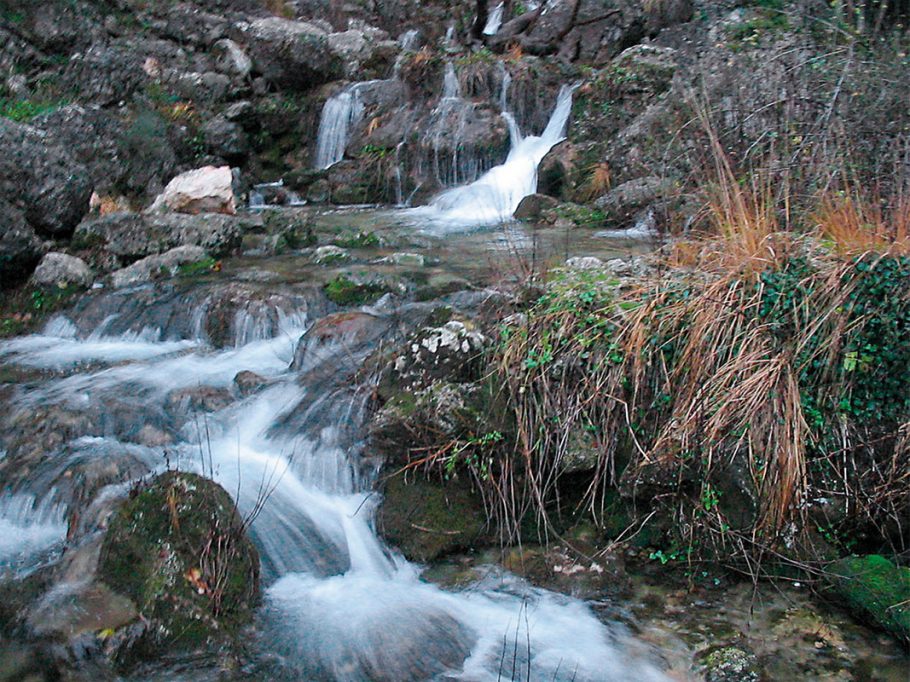
In nature, we are faced with an object that is not always perfectly defined. Its shape is not presented in a fixed and immutable way. The image shows the Mundo River spring in Albacete (Spain). / Juan Fernández CC BY-SA 2.0
When experiencing nature, a person’s aesthetic experience might be faced with new and different demands for attention and selection. In this case, not everything is intentionally given to them. This is why their contemplation is less fixed and directed and they are faced with a series of potentially interfering elements. This, of course, affects them and has a lot to do with the nature of the (natural) object itself. An object that always «announces and presents» multiple interconnected possibilities.
We are looking at an object that is not always perfectly defined (as artistic work is). Its form is not presented as fixed and immutable; rather, on the contrary, nature never declines or minimises its own extensive potential for improvisation and spontaneity.
When dealing with nature as it is, the world itself becomes an immediate spectacle. Without a doubt, it is – we insist – a present spectacle, ready to be experienced, not represented.
Natural objects do indeed elevate the sensitive aspects of the world, and do so in ways that are generous and excessive, but also unpredictable. Thus, we are willing to accept from sensitive nature both the force and interest for spontaneity, and the immoderation of its exuberance. This is something that perhaps we would not tolerate the same way in the world of art, which is always somewhat marked by the presence of norms, programmes, or the operative concept of canon (Budd, 2014).
Therefore, to what extent, when we transform the natural context into a product, are we also directly interfering in the unpredictability of nature and even controlling its exuberance? Are we destroying its spontaneity and normalising its other generous manifestations?
If the natural object lends itself to being aesthecised by our consciousness, it will not stop demanding and imposing its own terms and conditions, one way or another. These need not be adapted, after all, to those of artistic objects; it will not be transformed into a parameter, despite our constant interference and expectations (Dufrenne, 2017).
Faced with a natural spectacle, we must accept that we are ready to participate in its game and integrate ourselves into this natural occurrence of the world. We would thus, be able to maintain an extensive type of proximity with the aesthetic object, different in intensity from what we have with art. We would not neutralise nor filter its context. We would not focus exclusively on a sensitive side, rather, we would be fully integrated with it through our sensory registers.
Gazing at nature
Our aesthetic intention might be less pure in these circumstances; we might even consider it «more natural» in these terms. Ultimately, the object that affects us and that we are faced with belongs to nature and is part of it. This does not authorise us to create a hierarchy or second order for aesthetic natural experiences. Do we not carry nature (or its imprint, at least) in ourselves?
How many times have we paid attention to approaches that claim that contemplating nature aesthetically unavoidably implies looking at it through the point of view of art? Would this opinion lead us to expect from nature – turned into nature-products – only what art itself (our own extension) has accustomed us to expect from it?
Recognising that our frequent contact with works of art repeatedly and intensely shapes our taste, our perception, and reflection, is a different thing. This implies not only a familiarity with appreciative judgment, but also and most importantly, to adopt an aesthetic attitude and availability (openness/surrender) and to act on it.
It is undeniable that, culturally, the artistic experience can be (and indeed is) useful as a propaedeutic resource for our own experience of natural beauty, but it does not mark the limits of what is beautiful in nature. Natural aesthetics, in this case, would become a mere remedy or substitute for artistic aesthetics.
«Nature is natural only when it expresses the internal necessity that governs it»
This applies both to the world of art and its plural relationship with nature, and for nature itself, in its mutual dialogue with art. It might be appropriate, at this point, to clearly differentiate between two specific facts: art intervening to transform nature, and art representing nature (Maderuelo, 2007).
At least in principle, it is worth stating that transforming and imitating are different phenomena. In the first case, the key would be to wonder whether intervention forces nature so much that it denaturalises it or, on the contrary, it allows nature a wide margin so it can show itself «naturally» and display its own possibilities.
With this latter, dramatic alternative, we are simultaneously demonstrating two basic and unmistakable ways of understanding nature: we might see it as an «available reality», ready to be transformed, used, or exploited at will, or as a «given reality», full of possibilities, so that its development and activity can be ultimately expanded to its full potential.
We must also mention manifestations that are very close to us and also plural. These could qualify as aesthetic objects that mediate between art and nature. This, for example, could be the case of an urban landscape – which surprises us with its immoderation – or a well-kept park – which vitally and intimately circumscribes the specific area in which our walks take place. In these cases, we are speaking of radical transformations, but could we also discuss them in terms of an exclusive accretion of the possibilities of nature? This is, without a doubt, the truly thorny issue we continuously encounter when we look at our surroundings (De la Calle, 2002).
In addition, with respect to the other type of relationship between art and nature, within which the old and all-encompassing notion of mimesis is traditionally outlined, we must remember that imitating implies «seeing well» while simultaneously «allowing sight» of what has not yet been seen or what might still be seen inadequately. 1
Conversely, while mimesis «allows us to know» and helps us discover elements and relationships, effectively reintroducing them into the way we perceive reality, we must also recognise that the process of imitation implies an entire network of previously assumed knowledge and adaptations.
What nature is actually being imitated? Something already given and known, subject to conventions, ascribed to ideologies? Perhaps we continue to walk in a daze looking for those traces of the «believable», properties typical of the classics or looking for well-known postulates of la belle nature.
Often, this «nature» does not need to be dominated or transformed because, in fact, it has already undergone the restrictive and conventional adaptation of a gaze that surrounds it and bends its objectives. Is this not a different way of intervening and transforming nature, strictly through representation?
Natural versus artificial
However, the true pairing we need to explore here might be the one between the frequently opposed categories of natural and artificial, rather than the correlated domains of nature and art. In the end, every aesthetic object is, from one of those multiple perspectives, nature; and nature can, at the same time, become an aesthetic object, with its transformative force, as much as it – humanised nature or otherwise – can also simultaneously be expressive and natural, organic and transformative. It is expressive because nature is explicitly seen as a powerful categorisation.
«Without a doubt, in an intimate and personal aesthetic experience, nature speaks to us, and we understand it»
The artificial is, due to its regulation, a premeditated need, but a natural necessity underlies all conformations of nature (Dorfles, 1974).
Therefore, nature is natural only when it expresses the internal necessity that governs it, or rather, that constitutes and transforms it. Only through this condition can it be (self-)expressive. But if, conversely, we dare to impose our own premeditated and utilitarian needs upon it, it will be silenced and – after being turned strictly into a consumer product – it will withdraw its own expressivity and neutralise its own natural needs.
At this point, we must remember Mikel Dufrenne’s defining approach, according to which «natura naturans, in its active spontaneity, can only be revealed through natura naturata in its necessity». What happens, in this case, to the relationship between art and nature? Perhaps with this we are approaching – taking one step closer – a different, historically accepted idea of nature (Dufrenne, 1976).
What art has traditionally imitated from nature is natura naturata, or that which presents itself as an object for a subject, that which is conventionally natural or «naturalised» by ideology. But even when trying to dramatise it, to improve it in relation to certain goals, to beautify it (la belle nature), are we not instead trying to do justice to this natural object? That is, are we not trying to find it, to assign it its own truth and form? Was it not necessary, in some way, to rectify the raw reality of everyday existence, to reveal the singular essence to which the intimate and secret vocation of the object possibly responds and tends to?
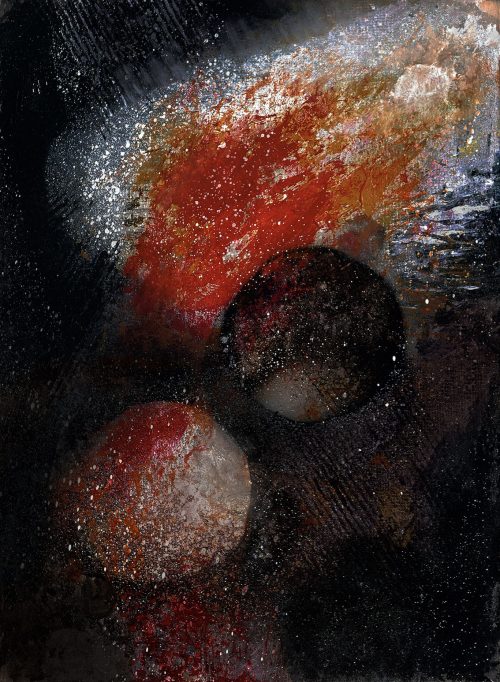
While classical art plays with the appearance of what it shows, modern art has pointed towards the process of creation. The goal is to produce objects that manifest the same power of existence as that of natural objects. The image, Galaxies in formation (2016), is by the artist Aurora Valero (mixed technique on paper, 25 × 35 cm).
Thus, the sought verisimilitude of the object would no longer simply be «that which has been convened», ideologically, with respect to it, but rather «that which is convenient» to it. In other words, to what is represented and would make it truer than that which has been strictly naturalised. Thanks to this, art – through its intervention in natura naturata – would achieve the manifestation of natura naturans, i.e., the silent force of the possible, where nature’s poiesis is effectively checked and verified (Nogué, 2018).
It is possible that the different views of classical art and those of artistic modernity regarding nature can be compared a little better from this functional explanatory hinge.
While classical art plays with the appearance of what it shows, modern art has pointed, rather immediately, towards appearance itself, that is, to the process of creation. We could say that it shows – it imitates – the creative power of nature: it tries to approach natura naturans directly.
Strictly speaking, the point is no longer to represent natural things, the naturalised (natura naturata), but rather to imitate the processes of nature itself. The goal is to produce objects that manifest the same power of existence as natural objects, which are their own principle (their «inner necessity», as Kandinsky would call it) and can attest directly to nature’s poiesis (Kandinsky, 1989).
These works do not imitate the products of nature, rather, they provide access to a potential world full of questions and enigmas. Therefore, they do not represent what is real, they point directly towards the realm of the possible.
In this way, current art evokes nature, is modelled on and from it and, at the same time, shows us natura naturans – its unpredictability, inexhaustibility, and fullness. Only then, as Kant stated, is it possible for art to be shown to us, also, as nature (Kant, 1977).
Conclusions
In the mutual game of spontaneity and necessity that surrounds the manifestations of natural aesthetics, from the gaze of the observer, we find the so well-known Kantian caution of endless finality.
Curiously enough, this teleological requirement might sometimes be, a different way – more refined, strict, and philosophical – of remembering that, in genuine aesthetic nature experience, we are often a little blind. We have no idea what we can demand from it, while nature compensates us with exemplary generosity with existence itself. In other words, it actually teaches us to «exist in the world» but reminds us of the curious connaturality of humans and nature.
Without a doubt, in an intimate and personal aesthetic experience, nature speaks to us, and we understand it. It makes sense for us. While it is certainly not a speech in itself, it does speak to us: what it says makes for a striking display and transformation, in the face of so much unexpected and accumulated degradation.
It speaks to us, then, and tells us about ourselves, and it does so even though the impoverished spectacle of the natural (constantly and entirely receding) reflects our own monstrosity, indolence, and barbarism, forcing it to grow ever more silent. Today, more than ever, nature’s silence is clearly opposed to the talkativeness of diffuse aesthetics, which persistently try to invade and colonise our environment and so too, our daily existence. Will it therefore be necessary to awaken/enhance Mother Gaia and remember the potential effects of holistic theories of evolution?
These are, in fact, the eloquent and forced silences and the intermittent cries of nature. In the face of an ecological necessity and a radical need for survival, nature dramatically warns us about the obvious risk of degradation, time and time again.
Notes
1. Oscar Wilde’s well-known (and only apparent) joke might be of interest here. He said that «nature imitates art», a matter we have already been commenting on. Undoubtedly, what we see and the way we see it are always strongly influenced by the long shadow of artistic manifestations, especially those that have vitally impacted us throughout our existence (Wilde, 1968). (Go back)
References
Albelda, J., & Saborit, J. (1997). La construcción de la naturaleza. Conselleria de Cultura, Educació i Ciència, Generalitat Valenciana.
Budd, M. (2014). La apreciación estética de la naturaleza. Antonio Machado Libros.
Castro, C. (2020). El origen de Gaia. Una teoría holística de la evolución. Libros en Acción.
De la Calle, R. (1984). Lineamientos de estética. Nau Llibres.
De la Calle, R. (2002). El paisaje como categoría estética. In Generalitat Valenciana (Ed.), El paisaje valenciano del siglo XX (pp. 333–394). Consorci de Museus i Generalitat Valenciana.
Dorfles, G. (1974). Naturaleza y artificio. Lumen.
Dufrenne, M. (1976). Esthètique et Philosophie. (3 vols.). Klincksieck.
Dufrenne, M. (2017). Fenomenología de la experiencia estética. Publicacions de la Universitat de València.
Kandinsky, W. (1989). De lo espiritual en el arte. Espasa.
Kant, I. (1977). Crítica del juicio. Espasa.
Maderuelo, J. (Ed.). (2007). Paisaje y arte. Abada.
Nogué, J. (Ed.). (2018). El paisaje en la cultura contemporánea. Biblioteca Nueva.
Thompson, W. L. (Ed.). (1989). Gaia: Implicaciones de la nueva biología. Kairós.
Wilde, O. (1968). El crítico como artista y otros ensayos. Espasa Calpe.

